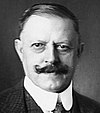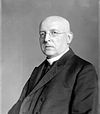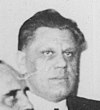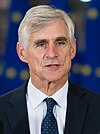
Czechoslovakia was a landlocked state in Central Europe, created in 1918, when it declared its independence from Austria-Hungary. In 1938, after the Munich Agreement, the Sudetenland became part of Nazi Germany, while the country lost further territories to Hungary and Poland. Between 1939 and 1945, the state ceased to exist, as Slovakia proclaimed its independence and the remaining territories in the east became part of Hungary, while in the remainder of the Czech Lands, the German Protectorate of Bohemia and Moravia was proclaimed. In 1939, after the outbreak of World War II, former Czechoslovak President Edvard Beneš formed a government-in-exile and sought recognition from the Allies.

The Sudetenland is the historical German name for the northern, southern, and western areas of former Czechoslovakia which were inhabited primarily by Sudeten Germans. These German speakers had predominated in the border districts of Bohemia, Moravia, and Czech Silesia since the Middle Ages. Since the 9th century the Sudetenland had been an integral part of the Czech state both geographically and politically.

Arthur Seyss-Inquart was an Austrian Nazi politician who served as Chancellor of Austria in 1938 for two days before the Anschluss. His positions in Nazi Germany included "deputy governor to Hans Frank in the General Government of Occupied Poland, and Reich commissioner for the German-occupied Netherlands" including shared responsibility "for the deportation of Dutch Jews and the shooting of hostages".

Kurt Alois Josef Johann von Schuschnigg was an Austrian politician who was the Chancellor of the Federal State of Austria from the 1934 assassination of his predecessor Engelbert Dollfuss until the 1938 Anschluss with Nazi Germany. Although Schuschnigg considered Austria a "German state" and Austrians to be Germans, he was strongly opposed to Adolf Hitler's goal to absorb Austria into the Third Reich and wished for it to remain independent.

The Austrian State Treaty or Austrian Independence Treaty re-established Austria as a sovereign state. It was signed on 15 May 1955 in Vienna, at the Schloss Belvedere among the Allied occupying powers and the Austrian government. The neighbouring Federal People's Republic of Yugoslavia acceded to the treaty subsequently. It officially came into force on 27 July 1955.

A Reichsgau was an administrative subdivision created in a number of areas annexed by Nazi Germany between 1938 and 1945.

The Federal Foreign Office, abbreviated AA, is the foreign ministry of the Federal Republic of Germany, a federal agency responsible for both the country's foreign policy and its relationship with the European Union. It is a cabinet-level ministry. Since December 2021, Annalena Baerbock has served as Foreign Minister, succeeding Heiko Maas. The primary seat of the ministry is at the Werderscher Markt square in the Mitte district, the historic centre of Berlin.
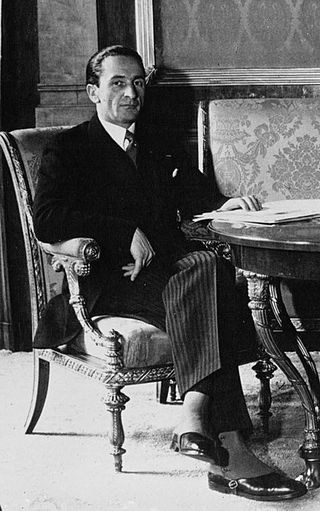
Guido Schmidt was an Austrian diplomat and politician, who served as Foreign Minister from 1936 to 1938.

Edmund Glaise-Horstenau was an Austrian Nazi politician who became the last Vice-Chancellor of Austria, appointed by Chancellor Kurt Schuschnigg under pressure from Adolf Hitler, shortly before the 1938 Anschluss.

Austria was part of Nazi Germany from 13 March 1938 until 27 April 1945, when Allied-occupied Austria declared independence from Nazi Germany.

The Fatherland Front was the right-wing conservative, nationalist and corporatist ruling political organisation of the Federal State of Austria. It claimed to be a nonpartisan movement, and aimed to unite all the people of Austria, overcoming political and social divisions. Established on 20 May 1933 by Christian Social Chancellor Engelbert Dollfuss as the only legally permitted party in the country, it was organised along the lines of Italian Fascism, was fully aligned with the Catholic Church, and did not advocate any racial ideology, as Italian Fascism later did. It advocated Austrian nationalism and independence from Germany on the basis of protecting Austria's Catholic religious identity from what they considered a Protestant-dominated German state.
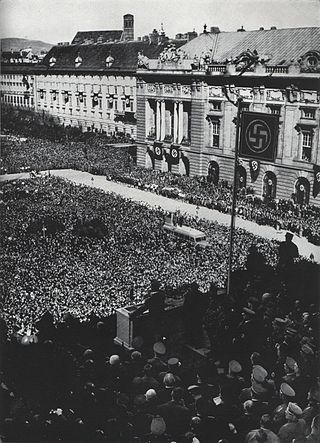
The Anschluss, also known as the Anschluß Österreichs, was the annexation of the Federal State of Austria into the German Reich on 12 March 1938.
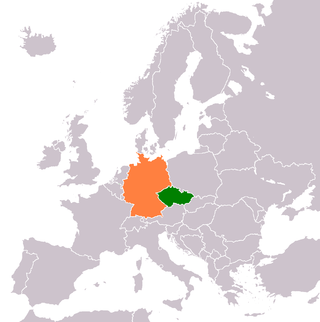
Czech–German relations are the relationship between Germany and the Czech Republic. The two countries share 815 km of common borders and both are members of the European Union, NATO, OECD, OSCE, Council of Europe and the World Trade Organization.
Franz Edler von Sonnleithner was a diplomat who acted as Ribbentrop's representative in Adolf Hitler's headquarters during the later years of the war with the rank of minister.

In Austrian politics, the Federal Chancellery is the ministry led by the chancellor. Since the establishment of the First Austrian Republic in 1918, the Chancellery building has served as the venue for the sessions of the Austrian cabinet. It is located on the Ballhausplatz in the centre of Vienna, vis-à-vis the Hofburg Imperial Palace. Like Downing Street, Quai d'Orsay or – formerly – Wilhelmstrasse, the address has become a synecdoche for governmental power.

The Reichsgau Styria was an administrative division of Nazi Germany consisting of areas in Styria, Lower Styria and southern parts of Burgenland. It existed from 1938 to 1945.

The Reichsgau Vienna was an administrative division of Nazi Germany based in Vienna, Austria. It existed between 1938 and 1945. Parts of Lower Austria were annexed to establish Greater Vienna, which then became the biggest city of Nazi Germany by area.

The victim theory, encapsulated in the slogan "Austria – the Nazis' first victim", was the 1949–1988 Austrian ideological basis formed by Austrians themselves under Allied occupation and independent Second Austrian Republic. According to the founders of the Second Austrian Republic, the 1938 Anschluss was an act of military aggression by the Third Reich. Austrian statehood had been interrupted and therefore the newly revived Austria of 1945 could not and should not be considered responsible for the Nazis' crimes in any way. The "victim theory" that had formed by 1949 insisted that all of the Austrians, including those who strongly supported Hitler, had been unwilling victims of the Nazi regime and were therefore not responsible for its crimes.





